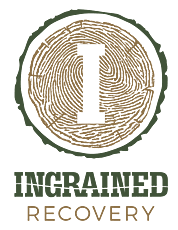What You Need to Know About the Risks of Abusing Lean
Many teens and young adults drink something new, popularized by music artists and the mainstream media, without regard for the dangerous effects. Is lean addictive, and what should you do if you feel ready to face the hold it has over your daily life?
Lean addiction is possible because of the codeine cough syrup. Codeine is an opioid and a Schedule II drug because of its high propensity for abuse and addiction. Withdrawal symptoms for those who face addiction include issues with breathing, heart problems, insomnia, mood issues, anxiety, and more.
Substance abuse treatment may be required for an addiction to this purple drank. Ingrained Recovery offers both medical detox and an inpatient program to meet you along the path to recovery. Whether you’re ready to take the next step or just want to learn more about lean, here’s what you should know.
Get Effective Detox and Rehab Options
Find Help At Ingrained Recovery
Is it Possible to Get Addicted to Cough Syrup and Sprite?
Drinking lean might seem harmless at first glance. Its components (codeine cough syrup, soda, hard candy, alcohol, and antihistamines) are all items that you can easily obtain. Doctors use prescription-strength cough syrup with codeine for pain relief or a bad cough. The other ingredients are readily available over the counter.
But does this combination prove to be addictive?
Unfortunately, purple drank, as it’s commonly called, can be quite addictive and may require substance abuse treatment. Why does this combo lead to a rampant addiction under the right circumstances?
What are the Negative Effects of Codeine Cough Syrup?
The real reason why lean addiction is so prevalent is because of the codeine misuse in this beverage, a common staple at parties with young adults. With the candy and soda to cut the taste of medication, a sweet beverage like this one leads people to drink more.
The more codeine you take, the more likely an addiction will occur.
Codeine is an opioid that falls into the category of Schedule II drugs, meaning it has a high likelihood of drug abuse over time. The long and short of it is that you should only take it when you truly need it. For example, you may take it when a doctor gives it to you for pain or when a common cold requires it for a painful cough.
Just because it’s easily obtained doesn’t mean cough syrup is without risks. Drinking lean leads to an overdose quickly because the sugary beverage encourages you to drink more.
Know the Signs of Codeine Overdose When You Consume Lean

With the prevalence of lean in pop culture, it’s no surprise that young adults use it more than ever. If you or your friends are using lean, be aware of the significant risks of the drink. Familiarize yourself with the telltale signs that someone has overdosed on a lean drink and seek help for them immediately.
- Cold, clammy skin
- Depressed central nervous system (decreased breathing, fast breathing, or shallow breaths)
- Nausea and vomiting
- Complaints of upper abdominal pain
- Pale or blue lips, fingernails, or skin
- Pinpoint pupils
No matter what you have been drinking or using, always call 911 immediately when you notice these symptoms. The person is having a medical emergency and could have serious consequences or may face death if not treated promptly.
Narcan can also be administered in this situation while waiting for help to arrive. Remember that Narcan reverses some of these dangerous side effects, but the above symptoms can return when it wears off if you don’t seek further help from emergency medical services.
Is it Time to Seek Treatment for Lean Addiction?
Teens and young adults aren’t the only ones who fall victim to this addictive substance. You might very well develop physical dependence if you’re drinking lean several times each week or turning to it instead of your healthy coping mechanisms.
When is it time to think about substance abuse treatment for lean addiction?
If you try to stop drinking cough syrup and Sprite (or other mixes), you might find that the withdrawal process is harder than expected. This is the time to seek treatment methods tailored to your needs, like the programs offered at Ingrained Recovery.
Withdrawal Symptoms in Lean Addiction

When you decide to enter treatment for lean addiction or decide to try to weather it on your own, be prepared for the withdrawal symptoms. Some are relatively benign, though uncomfortable, such as a runny nose or watery eyes. You might sweat more than usual or yawn.
However, other withdrawal symptoms might be so uncomfortable that you decide to enroll in addiction treatment and medical detox to be safe, particularly if you have been taking high doses to increase the sedative effect of the substance.
Some of the most common withdrawal symptoms for someone who has been drinking lean regularly can include:
- Increased anxiety or mood issues
- Restlessness or an increased desire to move around
- Insomnia
- Muscle and bone pain
- Fever
- Tachycardia
- Nausea, vomiting, and diarrhea
- Respiratory depression and trouble breathing
Lean addiction treatment allows you a safe space to detox from the drugs in your system, but the right level of care goes beyond mere medical supervision.
Get Accredited Treatment Programs
Find Help At Ingrained Recovery
Get Help for Detoxing from Opioid Addiction and Lean Addiction
Because the primary ingredient in codeine cough syrup is an opioid, you might benefit from a center like Ingrained Recovery that has experience in medication-assisted treatment. Prescription medications can counteract the worst of your withdrawal symptoms and keep you from physical harm.
What can we do to manage withdrawal symptoms for someone who struggles to stop using lean drink?
First, we can prescribe medications that counteract some of the more benign symptoms to make you a bit more comfortable. For example, we can offer drugs that help with insomnia, fever, and digestion. But there is a lot more that a skilled team can offer.
The FDA approves three medications for the treatment of severe withdrawal symptoms from opioids. A strong medical team can evaluate you for the right one. This can help calm your central nervous system, reduce cravings, and reduce the effects of codeine misuse if you relapse.
What Do Our Codeine Substance Abuse Treatment Programs Offer?

If you decide that your substance use or abuse of ‘Dirty Sprite’ has crossed the line into physical dependence, then it may be a good idea to enroll in a medical detox for codeine and promethazine.
Beyond medication-assisted treatment programs, Ingrained can also offer a comprehensive plan to target substance use disorders at the source.
Consider some of these benefits of our programs to see if recovery at our luxurious facility is right for you.
Access to Mental Health Resources and Help
Did you know that there is a clear connection between substance use disorders and mental illness? The Substance Abuse and Mental Health Services Administration estimates that one in four adults have both a mental illness and a substance use issue. It makes sense then that we would target both for lasting recovery.
Our clinicians will provide you with a thorough assessment to determine if you could benefit from either medication for anxiety, depression, and mood disorders or additional therapy.
You don’t have to live with the debilitating effects of mental health issues that cause you to drink lean or engage in other addictive behaviors. Holistic treatment and healing are possible.
Evidence-Based Therapy in Our Inpatient Treatment Programs
When people think of individual therapy, they might envision a comfortable couch and questions about childhood experiences that don’t seem relevant to their situation. While this is one option and may help certain people, we can employ various therapies to help you rewire the brain’s reward system.
Cognitive behavioral therapy is one of the most effective strategies because it teaches how thoughts and feelings influence actions. If you can interrupt a desire to drink lean at the thought stage or learn how to cope with feelings, you can often delay seeking a drink.
We also offer dialectical behavior therapy, which can help you develop more coping skills for life after addiction treatment. You’ll engage these skills in both individual and group settings, allowing you to learn and discover new things with your therapist and from your peers.
Equine-Assisted Therapy to Help Integrate Addiction Treatment and Healing
Ingrained Recovery also offers equine-assisted therapy, which can be very helpful for opioid addiction. It offers therapeutic help outside of a clinical setting. For many people, this is a welcome respite from the four walls of an office that hold them inside while they deep-dive into painful feelings.
According to the research, equine-assisted therapy is helpful for self-efficacy, improved mood, and even increased motivation to engage in substance abuse treatment. Taking a trail ride with our guide and connecting with an animal benefits your treatment outcomes.
In addition to equine therapy, we also offer complementary therapies with similar effects, such as yoga.
Immersion in Nature on Our Fifty-Acre Campus
Once you enter our campus, you can practically feel stress fall away. Ingrained Recovery is located on a sprawling fifty-acre campus where you can explore in your downtime. Whether you want to take a leisurely walk down a nature trail, go for a run to get endorphins flowing, or just sit in the sun and journal, we have space for you.
Access to nature is an important aspect of recovery because people who have access to green spaces have lower rates of anxiety, stress, and depression.
Don’t underestimate the power of spending an afternoon feeling the breeze on your skin. This is one of the many benefits of enrolling in a treatment program outside of the city. Not only do you get increased privacy and space to process your lean addiction, but you also get access to nature.
Around-the-Clock Access to Clinicians and Help

Maybe you’re worried about those thoughts that always seem to visit you in the middle of the night. What do you do if you face a serious craving for lean and codeine at midnight when your friends and support system aren’t awake and available?
This is one reason why you should consider residential treatment with Ingrained Recovery at the start of your sobriety. We have clinicians and medical professionals on staff 24/7 so that you always get the help you need when you need it most. We may also prescribe something to help you in situations that warrant it.
As long as you have a space in our recovery program, we want to support you all the way. We protect your privacy and struggles within our secluded facility, so no one has to know how hard this time may be for you. You’ll never have to go it alone when you recover with our team.
Up To 100% of Rehab Covered By Insurance
Find Help At Ingrained Recovery
Get Help from Ingrained Recovery Today for Issues With Lean
Are you ready to face your lean addiction and leave behind the dangerous effects of purple drank? Our enrollment team is ready and waiting to answer your questions about our medical detox program or our residential options. All it takes is a single phone call to get same-day placement when you’re ready.
Better yet, we can verify your insurance benefits in this initial intake call. The cost of care may be more affordable than you think, as some insurance carriers cover detox and inpatient treatment in full. This verification is a free service and lets you know what to expect upfront.
There’s no reason to delay seeking the help you need when you’re ready to take the first steps toward a long-term recovery. Ingrained Recovery wants to walk alongside you every step of the way.
References
- Peechakara BV, Tharp JG, Eriator II, et al. Codeine. [Updated 2024 Feb 28]. In: StatPearls [Internet]. Treasure Island (FL): StatPearls Publishing; 2025 Jan-. Available from:
- U.S. National Library of Medicine. (n.d.). Codeine overdose: Medlineplus medical encyclopedia. MedlinePlus.
- Maglione, M. A., Laura, R., Christine, C., Azhar, G. S., Nima, S., Mimi, S., Hernandez, E. J. M., Shanman, R. M., & Susanne, H. (2020). Effects of Medication-Assisted Treatment (MAT) for Opioid Use Disorder on Functional Outcomes: A Systematic Review. Rand health quarterly, 8(4), RR-2108-OSD.
- Substance Abuse and Mental Health Services Administration. (n.d.). What are co-occurring disorders?
- McHugh, R. K., Hearon, B. A., & Otto, M. W. (2010). Cognitive behavioral therapy for substance use disorders. The Psychiatric clinics of North America, 33(3), 511–525.
- Dimeff, L. A., & Linehan, M. M. (2008). Dialectical behavior therapy for substance abusers. Addiction science & clinical practice, 4(2), 39–47.
- Diaz, L., Gormley, M. A., Coleman, A., Sepanski, A., Corley, H., Perez, A., & Litwin, A. H. (2022). Equine-assisted services for individuals with substance use disorders: a scoping review. Substance abuse treatment, prevention, and policy, 17(1), 81.
- Berry, M. S., Rung, J. M., Crawford, M. C., Yurasek, A. M., Ferreiro, A. V., & Almog, S. (2021). Using greenspace and nature exposure as an adjunctive treatment for opioid and substance use disorders: Preliminary evidence and potential mechanisms. Behavioural processes, 186, 104344.

